
Deadlifts are a great exercise that build strength because they target multiple muscle groups at once, and there are several types of deadlifts that can help build strength in different areas of the body.
Deadlifts are a fantastic exercise that burns a lot of calories and helps you build muscle, which increases your metabolism and helps you burn fat.
Apart from squats, deadlifts are one of the most effective lifts you can perform. All types of deadlifts work your core muscles, as well as the large muscle groups of your lower body including your glutes, quads, hamstrings and lower back. In addition, deadlifting can strengthen the muscle in your forearms, shoulders, and traps.
However, different types of deadlifts can target certain smaller muscles more effectively. You can make slight alterations to your stance, grip and weight to perform different types of deadlifts.
You might think that you need plenty of space and large equipment to perform deadlifts, but in fact, all you need for an effective deadlift is negative resistance. A deadlift is a ‘pull’ exercise, so as long as you have a weight that’s heavy enough (and allows you to maintain proper form) you can perform different types of deadlifts at home with equipment that doesn’t take up much space. Not all deadlifts require a bar.
Kettlebells, dumbbells and even resistance bands can provide enough negative resistance to perform an effective deadlift.
You’ll be surprised at how much weight you can lift with the deadlift. However, only add as much weight as you can lift while keeping proper form. If you find that you can’t keep your back straight, or your shoulders are rounding at any point during the deadlift (even on the way down) it means you need to reduce the weight you’re lifting.
As always, be sure to consult with your doctor, a certified personal trainer or kinesiologist beforehand especially if you’re new to lifting. Read on to discover how different types of deadlifts can make a huge difference when it comes to achieving your fitness goals.
The Importance of a Warm-Up Before Trying Any Types of Deadlifts
The deadlift is a great exercise but can cause serious injury if performed incorrectly. Of course, your stance is important, but because we’re dealing with lifting heavy weight, it’s also vital to warm up with a simple yet effective mobility routine before attempting to deadlift. Some simple movements like leg swings and hamstring stretches, followed but some light cardio to get the blood flowing is a good place to start.
The next step is to open up the hips and warm up the lower back muscles to prepare your body for lifting heavy weights. Here, Dr. Aaron Horschig of Squat University will take you through a simple warm-up routine that takes less than 10 minutes and can help prevent you from injury.
Below are 6 types of deadlifts to try:
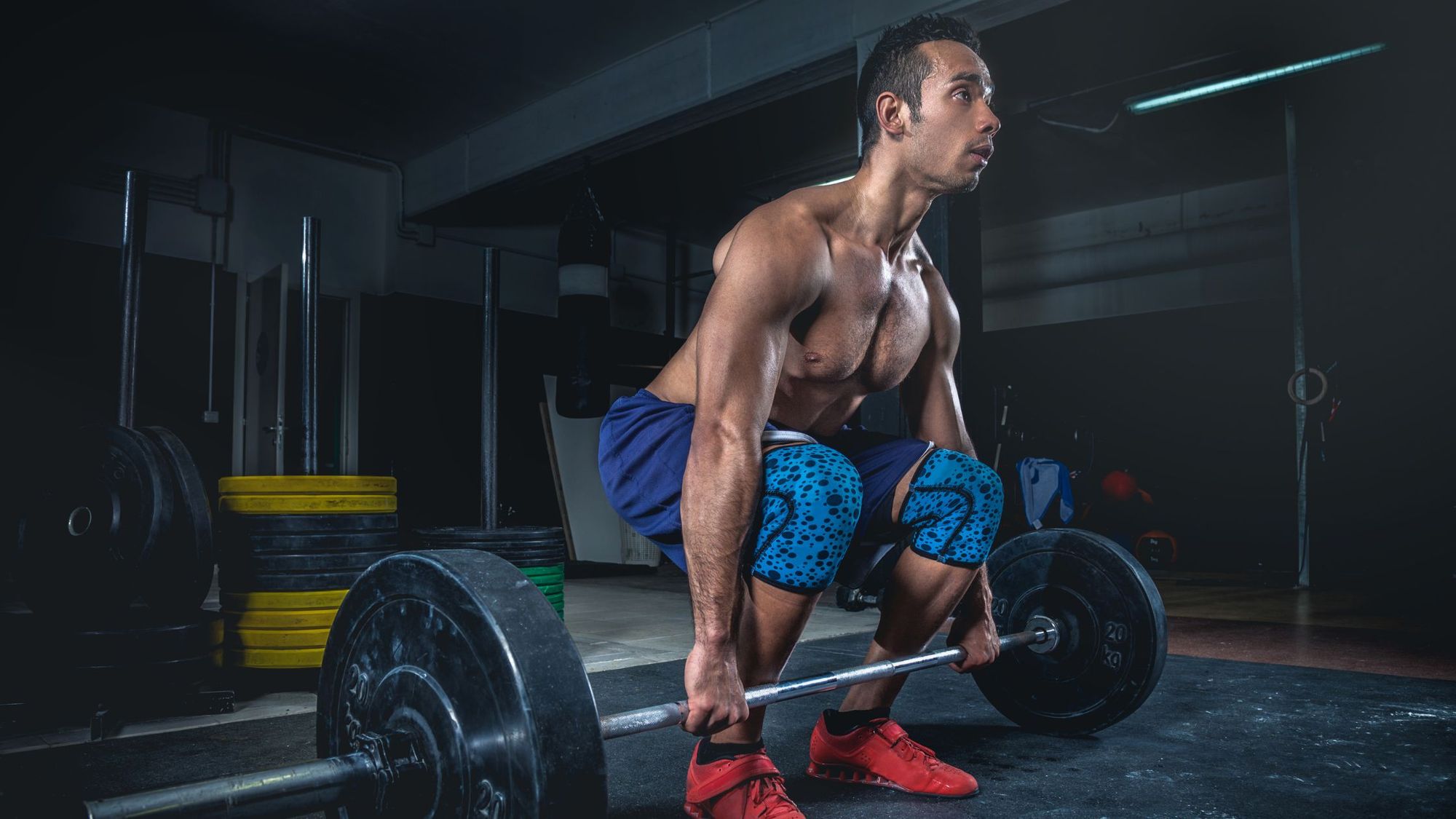
1. Standard (Traditional) Deadlifts
We will begin by discussing the standard deadlift. To perform this movement, there are three things to keep in mind: the placement of your feet, your grip, and your stance.
Begin by placing your feet shoulder-width apart. If you are performing this movement with a barbell, it should be in line with the middle of your feet.
Next, bend forward and grip the bar. Some lifters use a double overhand grip (grab the bar like you should if you were swinging from monkey bars, except upside down) while others like a hook grip (which we’ll explain this later). Others prefer a mixed grip, where one hand grabs the bar overhand and the other underhand.
The traditional deadlift typically involves a bar with circular plate weights on each side, often set up by your personal trainer. You might want to consider getting some lifting gloves to prevent blisters.
Finally, let’s talk about the stance and correct form for this deadlift. After you’ve got a firm grip on the bar, bend your knees while keeping your shins a few inches away from the bar and over the center of your feet. Allow your hips to drop while keeping your spine in a straight but neutral position. Do not round your shoulders or stick your butt out.
While keeping your head in line with the rest of your spine, lift your chest and pull your shoulder blades back and down. They should be above the bar. Now, you’re ready to lift.
Keep your core braced, squeeze your glutes and drive through your heels as you deadlift the bar in an upwards lift, in one smooth motion as you stand. Keep the 3 points of your feet firmly planted on the ground. Do not lift your toes or lean back as you lift. The bar should move straight up, remaining in line with the center of your foot throughout the entire motion.
Visual learners can click the link to this video, which features the 2019 World’s Strongest Man Martins Licis.
The traditional deadlift is a great full-body compound exercise that works many of the major muscle groups in your core, back, legs and upper body at once.
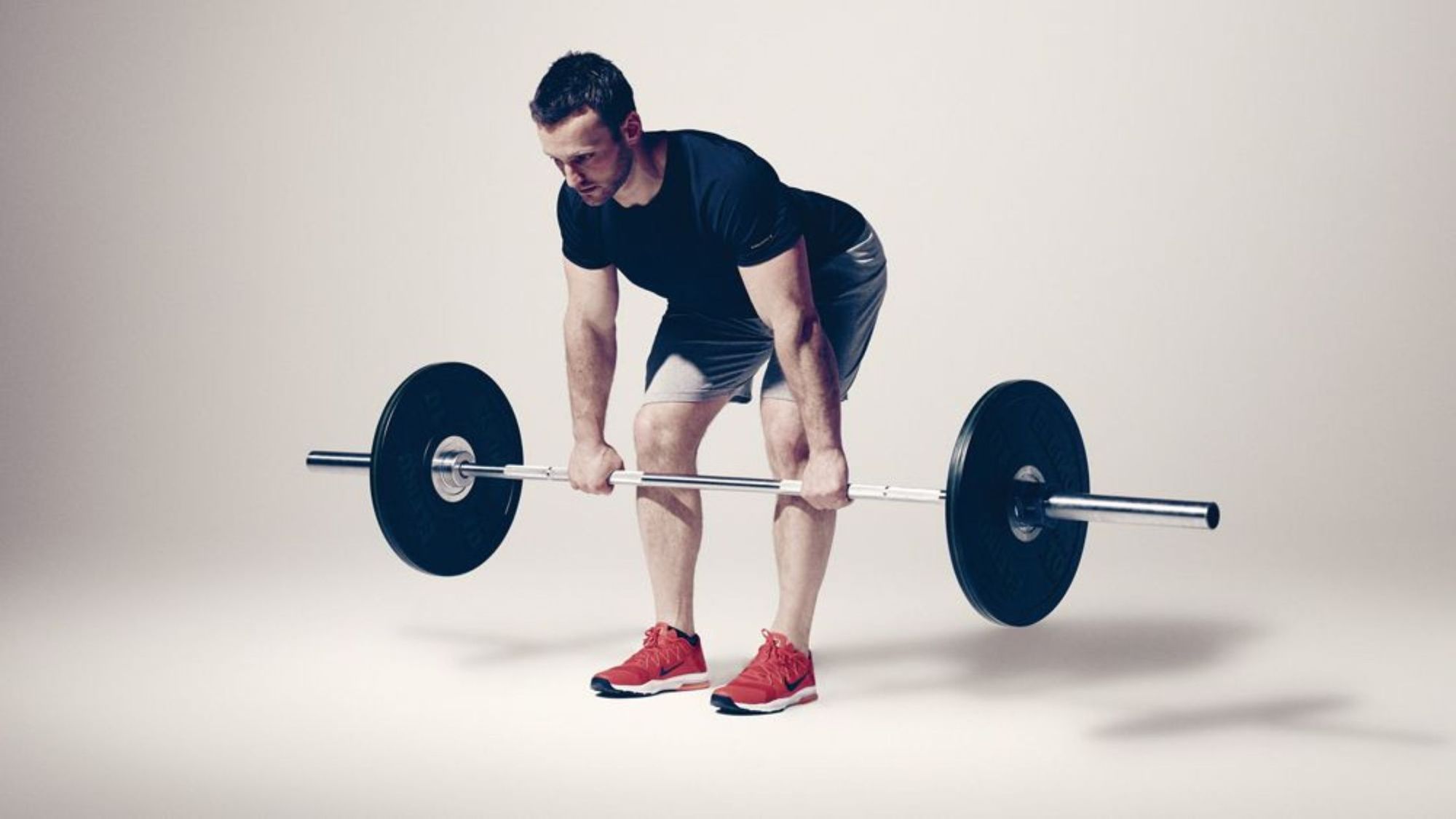
2. Romanian (or Russian) Deadlift
Like your standard deadlift, the Romanian or ‘Russian Deadlift’ is one motion that works your core, back, legs and arms at once. The major difference with these types of deadlifts is that they start at hip height instead of on the floor, and you can perform these deadlifts with dumbbells in each hand. There is less knee movement involved with the Romanian Deadlift (RDL) and more of a hinge movement at the hips, making it a great place to start for beginners. If you perform this movement and compare it to the standard deadlift, you should feel more activation in your glutes and hamstrings.
You can perform a RDL with a barbell, but they’re more commonly performed with dumbbells. If you’re using a barbell and a squat rack, adjust the J-hook (the moveable part where you would place the barbel) so that they are at the height of your hips. Load your barbel and grip the bar. Again, your feet should be shoulder width apart and firmly planted on the ground. You might want to consider taking off your shoes to feel yourself ‘grasp’ the floor.
Hinge at the hips while keeping your spine in a straight, neutral position. Instead of imagining yourself bending over (as we often round the shoulders and mid back) think about sending your hips back, maintaining a slight bend in the knees. If done correctly, you should feel your glutes and hamstrings working hard. Keep your barbell or dumbbells a couple of inches away from your shins the entire time.
Tip: you can perform these types of deadlifts with dumbbells and maintain a B-stance to isolate either side. Often, our stronger side will compensate for the weaker side. Single-leg RDL’s can help you build equal strength in both legs.
In fact, single leg deadlifts (of many forms) are a very effective exercise, especially for building glutes.
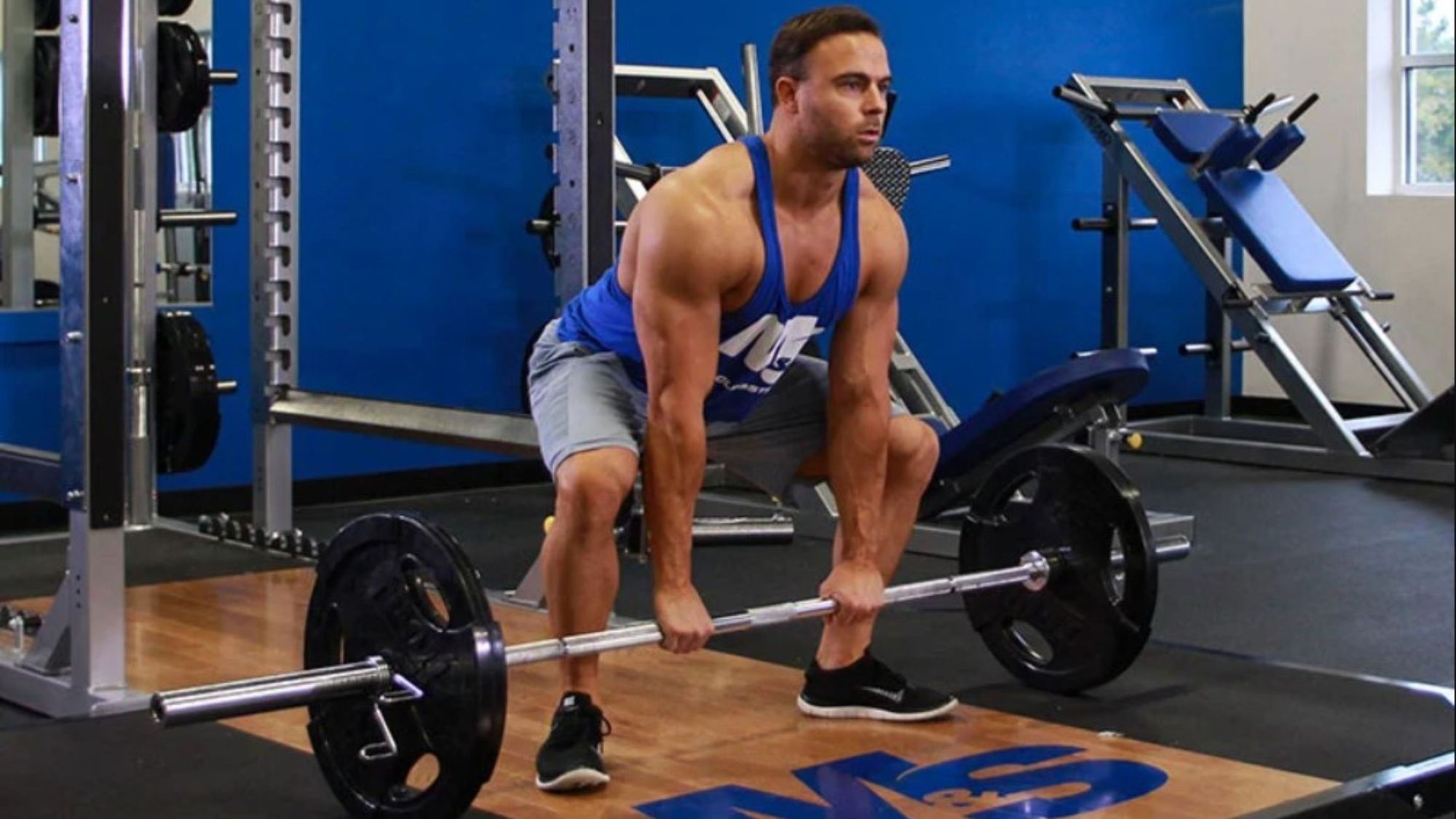
3. Sumo Deadlift
The sumo deadlift variation will target many of the same muscle groups as the others on this list like the quads, glutes and core, but works the hamstrings and, importantly, the inner thighs or adductors. It is also an effective way to improve the mobility and flexibility of the hips.
Additionally, many consider the sumo deadlift to be easier to perform due to its wide stance, which significantly shortens the range of motion.
Sumo deadlifts are great for building the glute muscle and toning the legs.
To perform these types of deadlifts, begin with a wide stance. Your feet should be greater than shoulder distance apart with your toes pointing outwards. Beginners should take care to execute proper form and might consider enlisting the help of a personal trainer to make sure that they set up correctly. If this form feels uncomfortable, consider using lighter bumper plates for the first few sets.
Again, grip the bar with a neutral spine, keeping your shins perpendicular to the floor and a few inches from the bar. This time, grip the bar between your knees. With your chest out and shoulders back, engage your core and drive through your heels to stand up, squeezing your glutes at the top.
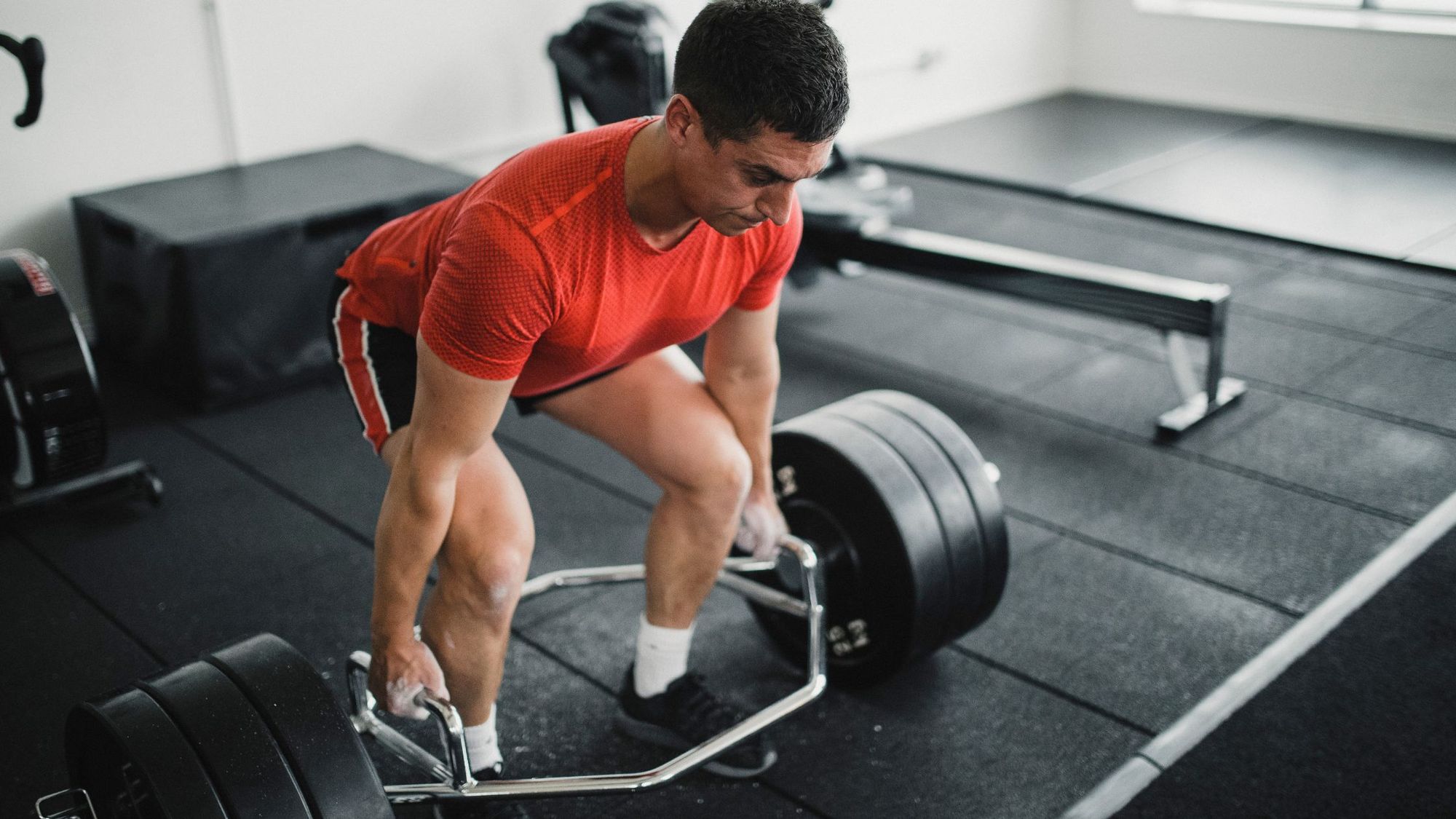
4. Hex or Trap Bar Deadlift
A hex or trap bar deadlift uses a specialized piece of equipment rather than a barbell. You’ve likely seen a trap bar at your gym before (it is square-shaped with prongs on each end) and might have wondered what it was for.
To use a hex bar, load the weight on either end and step into it. Grip the bar by holding on to the handles on each side.
By far, the hex bar deadlift is perfect for entry-level lifters. Its shape forces your body into an optimal pulling form and is a great tool for teaching proper lifting techniques. It also places less stress on the lumbar spine, so if you have persistent lower back pain, using a hex bar (with approval from your physician, of course) can be a way for you to increase strength without risking further injury.
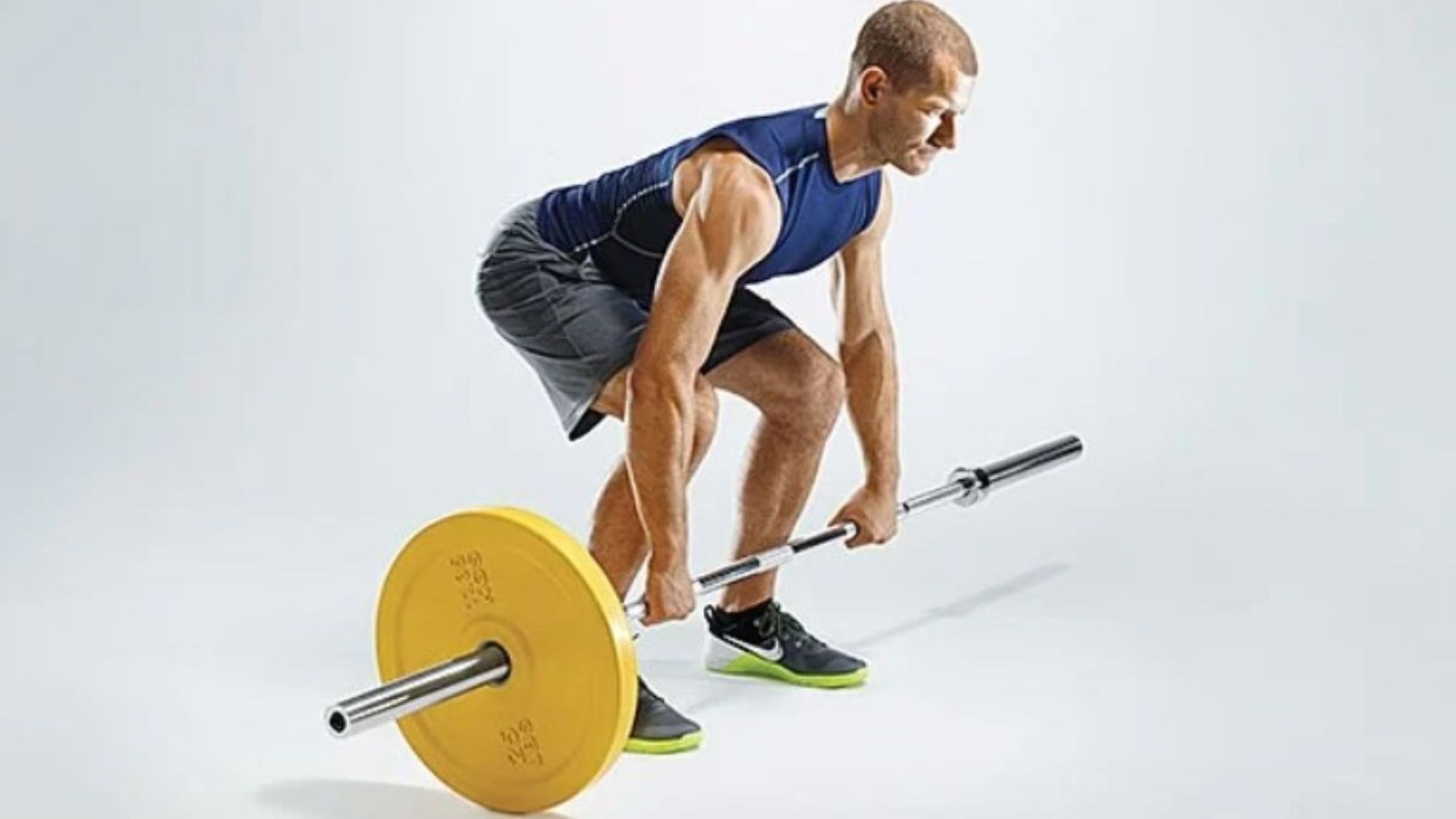
5. One Side Loaded Barbell Deadlifts
You might think it counterproductive to only load one side of the barbel, but this deadlift variation puts a laser focus on your core, especially the side abdominals.
It’s very important to note that these types of deadlifts should not be attempted by beginners, and anyone trying it should be well-versed in regular deadlifts. Always consult with your medical professional beforehand, and asking a personal trainer or physiotherapist to spot you as you attempt your first few sets is also a good idea.
Begin with a very light weight on one side of the barbel only. Grip the bar as close to the collar of the barbel as possible with one hand. With your other hand, grip the bar outside your leg. Stand up using the same standard technique, driving through your heels and pulling the bar up with you.
The major difference is that there is only weight on one side of the bar. So, while your left hand might be pulling up, your right hand is actually going to need to ‘push down’ in order to keep the bar straight. This offset to your center of balance is going to keep your abs working hard in order to maintain stability. This is also what can make these types of deadlifts so dangerous if performed incorrectly or if your core is not already strong. Again, this exercise should not be attempted by beginners.
For best results, it’s a good idea to incorporate all the different types of deadlifts into your fitness routine. When you perform deadlifts regularly and properly, your posture will improve, your strength will increase, and your legs will appear more toned. However, it’s important to keep in mind that every body is different and that some people can achieve a defined, toned look more easily than others based on their genes.
Are you genetically more likely to build muscle faster, or slower? Are you genetically more likely to have higher or lower strength?
A DNA test from CircleDNA can answer all these questions, and give you some insight into your genetic fitness traits.







Comments are closed.